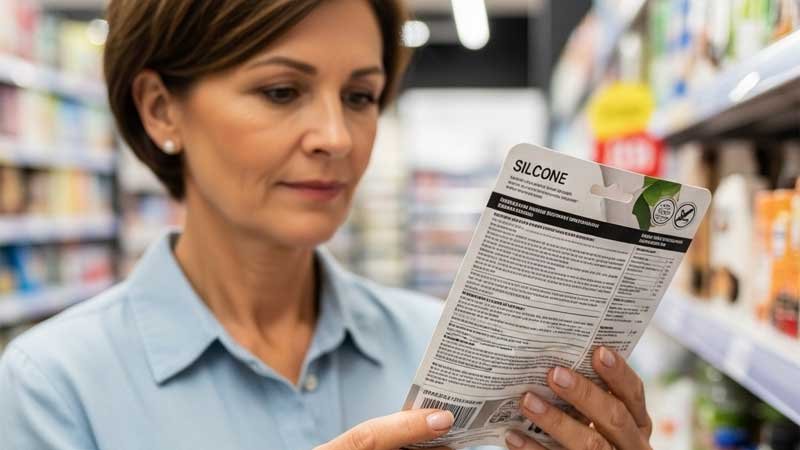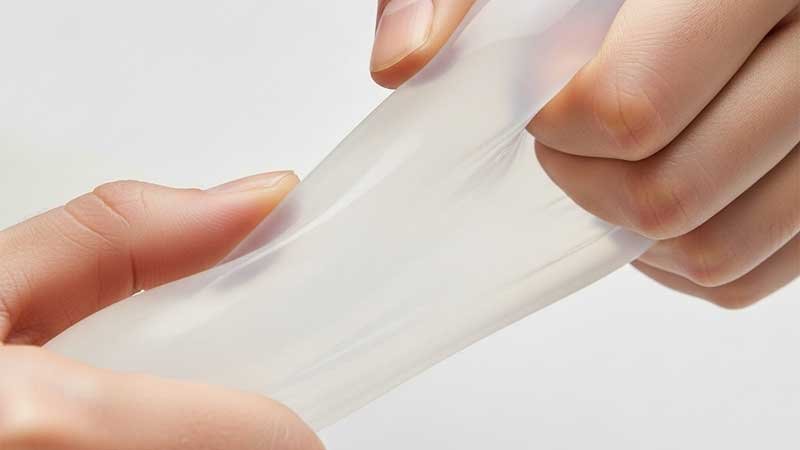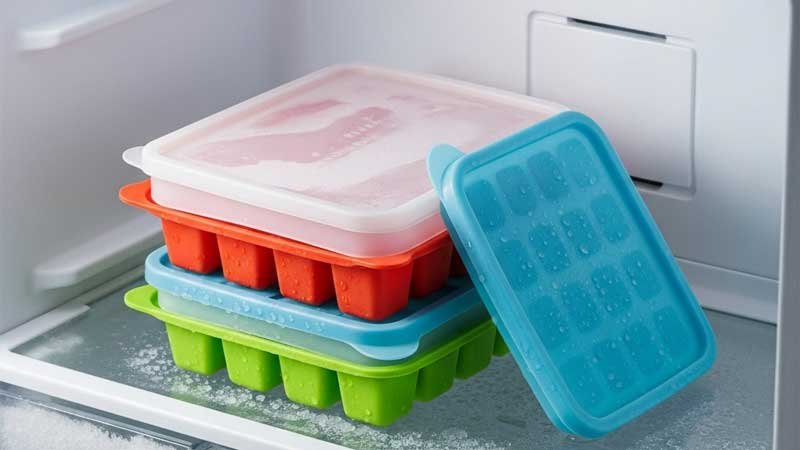Not all silicone is the same, especially for products that touch your food. Some use safe, certified materials. Others may have fillers or strange smells when heated. How do you tell the difference?
In this guide, we’ll walk you through a few easy, practical ways to check if a silicone product is truly food-grade.
What Is Food-Grade Silicone?
Food-grade silicone is a safe material for direct contact with food. This type of silicone won’t affect the taste, smell, or color of what you’re cooking or storing. It’s free from BPA, plasticizers, and other toxic additives. It can handle extreme temperatures—from -40°C to 230°C—making it suitable for baking, freezing, and even microwave use.
Truly food-grade silicone must pass strict safety standards, such as FDA (U.S.) or LFGB (Germany), to prove that it’s non-toxic, odor-free, and won’t leak oil during use. On the other hand, some products claim to be food-grade but have no certification. These may contain excessive fillers or use industrial-grade silicone. This can pose health risks over time.

What Are the Easiest Ways to Spot Food-Grade Silicone?
You don’t need fancy tools to check if a silicone product is safe for food. By using your senses—smelling, touching, and looking—you can quickly spot red flags. Here are five easy ways to check.
Smell It: Is There a Strong Odor?
Food-grade silicone should be nearly odorless, or have just a light silicone smell. Even when heated, it shouldn’t give off a strong scent.
Low-grade silicone often smells like plastic, rubber, or chemicals, especially when warmed up. This can mean poor materials or skipped curing steps.
Touch and Squeeze: How Does It Feel?
Food-grade silicone feels smooth and soft, with just the right stretch. Press it or pull it—it should bounce back quickly and not turn white.
Low-grade silicone may feel sticky, greasy, or too soft. It might tear easily, leave residue, or show white marks when stretched. These signs often point to cheap fillers or unsafe additives.
Look at the Surface: Is It Clean and Even?
Food-grade silicone usually has a clear or soft color and a clean, even finish. The surface should look smooth with no specks.
Low-grade silicone may look cloudy, yellow, or uneven. If you see bubbles, dots, or rough patches, that’s a sign of poor processing.

Burn Test
Burn a small piece and check what happens.
| What to Look For | Food-Grade Silicone | Low-Quality Silicone |
| Smoke | Little or no black smoke | Thick black smoke |
| Smell | Light or no smell | Strong chemical odor |
| Ash | Light gray/white ash | Black soot or oily residue |
Boiling Water Test
This is a quick home test that’s simple and safe.
Steps:
- Boil a pot of water.
- Drop the silicone item into boiling water.
- Wait 5–10 minutes and observe any changes.
| What to Check | Food-Grade Silicone | Low-Quality Silicone |
| Smell | No strong odor | Strong plastic or chemical smell |
| Water Clarity | Clear and clean | Cloudy, greasy, or oily surface |
| Product Changes | No damage or color change | Turns yellow, soft, or patchy |

What Should You Watch Out for When Buying Food-Grade Silicone?
When checking if a silicone product is truly food-grade, it’s not just about how it smells, looks, or feels. The place you buy it from and the brand you choose are just as important.
Choose a Trusted Brand
Reliable brands are usually upfront about the materials they use. They often provide test reports and show certifications like FDA or LFGB approval. Look for terms like FDA approved, LFGB certified, or made with food-grade silicone on product packaging or the brand’s website.
Buy from Reliable Sources
Official brand websites often give full certification info and let you trace the product’s origin.
Well-rated online stores like Amazon can be good too. Look for Sold by Amazon, Brand Store, or other trust indicators.
Use Customer Reviews as Clues
On major platforms, reading reviews can help you spot potential issues.
Pay attention to:
- Complaints about strong smells, oiliness, or color changes.
- Mentions of food-grade claims or packaging details.
- A high number of positive reviews and steady sales volume.
Be Careful with Unusually Cheap Products
True food-grade silicone costs more to make. If a product is priced way below average, there may be hidden risks, such as:
- Use of industrial-grade silicone or cheap fillers.
- No proper high-temperature curing.
- No test reports or traceable material sources.
If the price seems too good to be true, the safety likely isn’t. Cheap silicone products often come at the cost of your health.

Conclusion
As consumers, we may not have the tools to check complex manufacturing processes. But we can learn to spot better products with a few simple tests and careful observation. Food safety is very important. When buying silicone products that touch food, take a moment to check carefully. Look for FDA approval, smell the product, feel its texture, or try a quick boiling test. Your health is worth the extra care.
Want peace of mind when buying silicone kitchenware? Choose trusted suppliers and always ask for certifications. If you’re not sure where to start, feel free to reach out—we’re here to help with many years of silicone expertise.